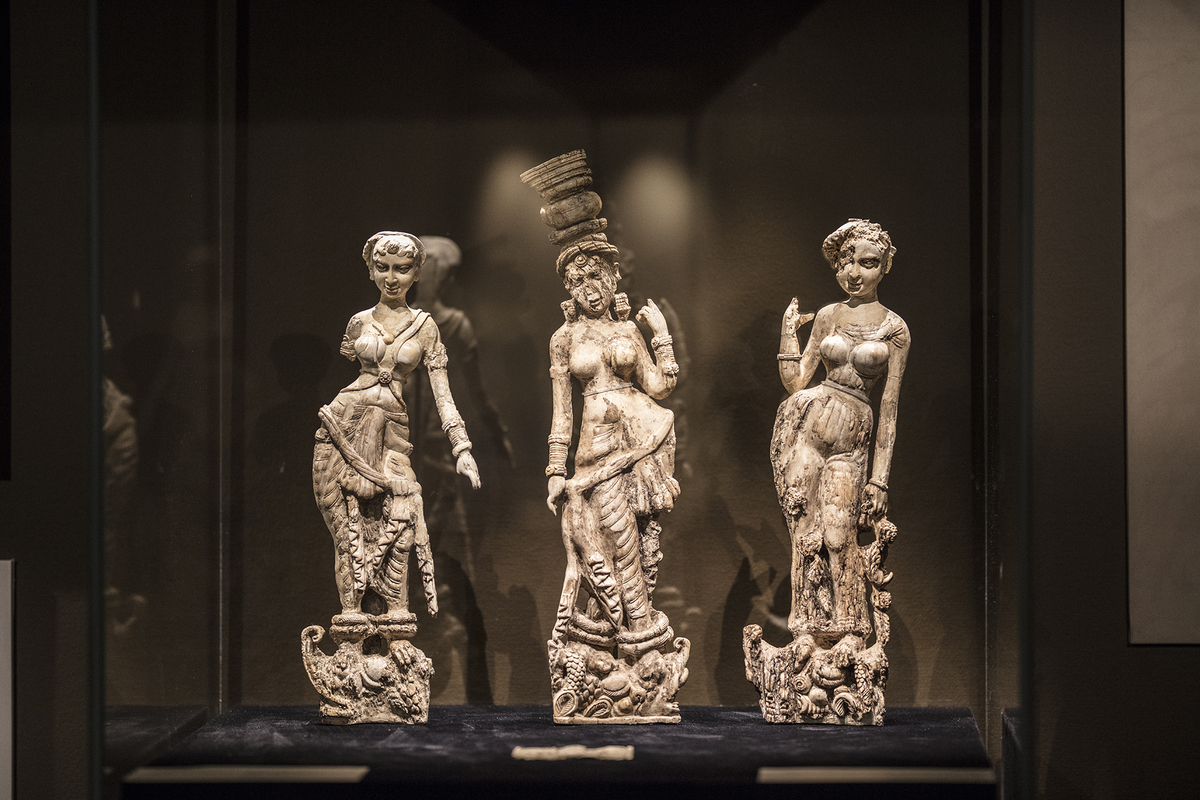 |
|
[Photo provided to China Daily] |
"Also, it inspires us to reflect on how we should view history, as well as our culture and that of others. It reminds us of the importance of an attitude of tolerance, an open mind, mutual learning and shared development," he says.
The objects came from four archaeological sites across Afghanistan, including Tepe Fullol, a northern village where gold and silver dating to the Bronze Age was found by local farmers in 1965. They were cut into uneven pieces for sale, and staff members of the National Museum of Afghanistan managed to retrace several of them. Some of these broken gold pieces that bear geometric and animal patterns are on show.
The exhibition also shows artifacts unearthed from the ancient ruins of Ai Khanoum, a city founded around 280 BC and destroyed by nomadic invaders around 145 BC. Decorative bronze and limestone components of architecture, human figurines and sculptures of deities demonstrate a distinctive influence of the civilization and culture of ancient Greece.
There are also objects excavated from several tombs of Tillya Tepe, dated to the early first century AD and earlier. The treasures include Rome coins, Greek figurines, Chinese bronze mirrors and silk, Indian ivory carvings and glassware from Syria or Egypt. The unique cross-cultural features show Afghanistan's status as an international, creative and diverse civilization along the ancient Silk Road.